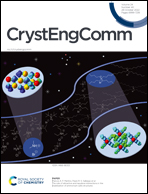Shaping particle size distribution of a metastable polymorph in additive-assisted reactive crystallization by the Taguchi method†
Abstract
Particle size and size distribution (PSD) are two crucial attributes for both particulate and formulated products, particularly in the pharmaceutical industry. The control of the two attributes is missing in the crystallization of a metastable polymorph in literature although there have been some approaches that mainly focused on the control of PSD alone or for the stable polymorphs. In the present study, L-glutamic acid (L-GLU) is selected as a model compound that exists in two polymorphs, namely α-GLU and β-GLU. α-GLU is a metastable polymorph and shows favorable processing and product properties. Cooling, antisolvent, and reactive crystallization methods are revisited to examine if α-GLU can be prepared without the occurrence of polymorphic transformation. When L-phenylalanine (L-PHE)-assisted reactive crystallization is able to produce α-GLU reproducibly, the method is subjected to the Taguchi method for the targeted particle size and PSD in a range of 100 to 200 μm with four factors and three levels, such as the addition rate of sulfuric acid (aq), reaction temperature, agitation rate, and concentration of L-PHE. The optimal combination of those factors giving the narrowest PSD of α-GLU is obtained as the factor of reaction temperature has the greatest impact on the stability of the system. Ultimately, a workflow for developing a crystallization process with the control of particle size, PSD, and polymorphism is proposed.



 Please wait while we load your content...
Please wait while we load your content...